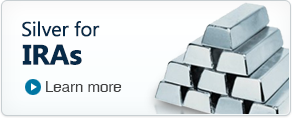When investing in silver bars, or just silver in general, the only way it was done in the past was to actually get your hands on silver bars and store them yourself. Nowadays you can own silver without ever having touched, and in some cases, without ever having seen the metal which you own.
Of course the only real way to invest in silver is to make a purchase and have the silver bars that your purchase be shipped to your place of living. In some cases having mass quantities of silver bars shipped to your house may not be a viable option, and it is at this point that many turn to what we call “paper silver”, or paper investments in silver.
Before we even start it must be said that the truly best way to invest in silver is to actually purchase and possess silver bars, but that does not mean it is the only way to make an investment or even gain a return on that investment. In the following few sections we will talk all about what makes a paper investment in silver different than a physical investment, as well as the advantages and disadvantages that come along with each option.
Precious Metals ETFs
One way you can make a paper investment in silver is to purchase what is called a precious metal ETF, or Exchange-Traded Fund. These ETFs allow the average, every day investor the ability to own stake in a trust that holds and stores silver in the physical form.
The cost of your ETF will be decided by the spot value of silver at the time of purchase, as well as the cost the particular holding facility charges for storage and payroll expenses. For silver investors, the most popular ETF goes by the name of iShares Silver Trust, or SLV.
An advantage of investing in a silver ETF is that you do not have to pay as much per transaction like you would with physical silver. ETFs are transferred electronically which means that you will only have to pay minimal surcharges as opposed to shipping and handling prices which, when dealing with large quantities of silver, begin to add up quite rapidly.
Another plus side to owning and trading ETFs is that you never have to worry about storing and protecting your investment, as that is left into the hands of the management and employees at the trust.
With that being said, it is only right that we let you in on a few downsides to investing in silver ETFs. The first downside is that you never actually own any silver when you purchase an ETF, you simply own part of a trust that stores and protects silver. On top of it all, some people do not consider owning an ETF owning silver at all because the shares which you buy can never be traded in for any real, physical silver.
Most often ETFs are set aside for traders who play the short-run ups and downs of the market, not investors who are in it for the long haul.
Precious Metals Certificates
Precious Metals Certificates are closer to owning physical silver, yet you never actually get to hold, touch, or see the amount of silver you own. Rather, a precious metal certificate is simply a piece of paper that says a specific bank is holding a specified amount of silver on behlaf of the holder of the certificate.
It may seem like these certificates and even the banks behind them may be hard to trust, but many of the institutions that hand out precious metals certificates are backed by respected governments which should quell any and all worries that you may come across. There are three types of certificates that are handed out, each of them different for the last.
Types of Precious Metals Certificates
The first type of certificate is called an allocated account which means that your certificate dictates exactly how much silver you own and whether it is in the form of bars, rounds, or coins. With this type of certificate you have to pay storage fees as well as a one-time additional fee to purchase the certificate itself.
The next variety is what is called a pool allocated account which specifies that the certificate holder owns a certain amount of silver, but it does not specify whether it is in the form of bars or coins. Owners of this certificate must also pay storage fees and additional fees if they would like their bullion to ever be physically shipped to them.
The final variety of precious metals certificates that exists is a pool unallocated account and what makes this unique is that the company holding your metal is free to do what they want with it. In a pool allocated account the company is holding the certificate holders metal and is unable to touch it, but in an unallocated account not only can the holding company do what they want with it and makes it possible for what are called “runs” to happen.
A “run” happens when too many investors ask to be shipped their physical silver at a time where the trust does not have in stock enough silver to satisfy the current demand. Unallocated accounts are cheaper as they typically do not charge a storage fee, but with the possibility of a run present at all times, an investment in an unallocated account carries with it an added element of risk.
Precious Metal Accounts
Precious Metals Accounts are most closely related to certificates in that they can be purchased in either allocated or unallocated varieties. The main difference is that instead of being operated by national banks or a government program, these accounts are run and managed by private companies which allows smaller investors to take advantage of this type of paper investment in silver.
In unallocated accounts traders are purchasing bullion that is grouped together and is not specified as to whether it is silver coins or bars. If you would like to see any of your physical silver you will have to pay what is called a fabrication fee in order for the company to ship it to you.
Allocated accounts give the owner of the account an actual amount of specific bars and coins that have their name on them. Unlike an unallocated account, there are usually no or very minimal fees involved with attempting to have your silver shipped to you.
The advantage of a precious metal account over a certificate is that smaller investors are able to join in on the action. Just like certificates, accounts are also susceptible to runs and in the event of an all-out financial crisis an investor in a metal account may be left with nothing at all.
Precious Metals Futures
When we talk about precious metals futures, we are really speaking of a contract that two parties enter into to purchase precious metals at a future date at a specified price. The person who purchases the contract is in agreement to purchase silver at the dictated later date while the seller is committing themselves to a delivery of precious metals to the buyer at a set price at a point somewhere down the road.
The thing about trading futures is that the actual physical transfer of silver rarely ever takes place because most buyers cancel their promise to buy the silver by buying a contract to offset an earlier agreed upon transaction or by selling a futures contract in order to cancel out a purchase. To put it simply, more often than not futures traders are, for all intents and purposes, exchanging cash based on how silver performs in a given time period.
If you want to buy or sell a futures contract you can do so by laying down what is known as a margin, or down payment. This down payment is then held by an independent financial institution (organizations like JP Morgan and TD Ameritrade). By making use of a financial intermediary the entirety of the contract’s balance is guaranteed and even if one party cannot afford to pay, the financial institution has the money recipient covered.
Some advantages of making use of precious metals futures is that an investor usually doesn’t ever actually have to deal with physical silver and instead deals primarily in cash. Another advantage is that investors can often purchase silver at a lower price through futures investments than they would be able to find if they were purchasing physical silver.
Some of the downsides to investing in precious metals futures is that you never have any physical silver and while futures may help you make huge amounts of money in a short period of time, it also puts you at risk of losing a lot too.
Mining Stocks
Another way of investing in paper silver is by investing directly into the companies that mine the silver that is eventually turned into bars and coins. The price of a given company’s stock most often replicates the price and movement of the metal which they mine.
Reasons that a mining company’s stock may vary from the price of the metal they mine is because mining companies have to take into consideration environmental, government, and management concerns that may arise. For example, if a mine’s employees go on strike, the price of silver may increase while the stock of the now stagnant mining company may plummet.
Mining stocks are inherently more sensitive than physical silver because with every change in the price of silver itself comes an amplified change in the value of the mine’s stocks. This means that if the price of silver falls by a certain percentage, the value of the stock of the mining company will fall at an even higher rate, proportionally.
Much like any other type of investment where you don’t get to physically hold silver, mining stocks are also subject to crisis situations where at the end of the day you stand the chance to be left with nothing. Mining stocks are especially unique because unlike certificates and accounts, not only do you not get to hold any actual silver, you don’t even have a stake in any either.





